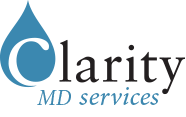We have been asked by our clients to put together a summary on financial assistance programs available to physicians. We carved out the important ones and summarized them in layman’s terms. Keep in mind that these programs are changing by the day. It is a general guide from which you can learn about the ones that may apply to you, so you will look into it further with your accountant or advisor.
10% Temporary Wage Subsidy
This subsidy will reduce your payroll deduction by 10% of the salary your corporation paid its employees (including yourself) between March 18, 2020 and June 19, 2020. The maximum subsidy is $1,375 per employee up to a maximum of $25,000 per Corporation over the entire period (not per month).
Who may benefit from this?
Incorporated physicians who have employees on payroll. It is fine if the physician can be the only person on payroll.
Example:
On March 27th, 2020, your corporation paid yourself and one of your employees a salary of $7,000 and $4,000 respectively. The payroll deduction for the given salary should be about $2,500 (taxes, EI and CPP), which will be remitted on April 15th, 2020. With the subsidy, you can reduce your deduction by $1,100 (10% of $7,000 + $4,000), and remit $1,400 instead.
Canada Emergency Wage Subsidy (CEWS)
CEWS will provide 75% wage subsidy (up to $847 per week) to your corporation up to 12 weeks, retroactive to March 15, 2020. To be eligible for this subsidy, you must experience a drop in income of at least 15% in March 2020 and 30% for the following months. The drop in income can be calculated based on billings (earned by not yet been paid) or income paid to the corporation during that period. However, you must use the same calculation methods for all the months. Also, if you are eligible for one period (Period 1 or Period), you are automatically eligible for the following period. This wage subsidy would include salaries paid to you and/or your employees.
Eligible Periods
Who may benefit from this?
Incorporated physicians who have employees on payroll and the corporation has experienced a drop in income in March, April or May 2020 compared to the average monthly billings of January and February 2020 or the corresponding month in 2019. It is fine if the physician can be the only person on payroll.
Example:
Your billings for March 2020 has dropped 17% compared to March 2019. On March 27th, you paid yourself $3,000 and one of your employees $2,000 based on a bi-weekly pay period. Your corporation will receive a subsidy of $847 (max) x 2 your salary and $750 x 2 for your employee’s salary.
Note: The application for this subsidy has not yet been opened. There is a chance that this may change by the time it is available.
Canada Emergency Response Benefit (CERB)
CERB can provide a payment of $500 per week up to 16 weeks if a physician has stopped or reduced the workload due to reasons related to COVID-19. The reasons can be lack of patients or being in self-isolation. The criteria has been changed a few times since CERB was introduced. The current eligibility criteria is that you cannot have earned more than $1,000 in income for 14 or more consecutive days within the first four-week benefit period. For subsequent claims, you cannot have earned more than $1,000 in income for the entire four-week benefit period.
For physician working as an employee or a sole proprietor, income would mean any salary or self-employed income paid to you during the 4-week period. For incorporated physicians, income would mean billings paid to the corporation AND salary or dividend paid to you from you own corporation.
Who may benefit from this?All physicians who have stopped working or reduced their workload due to reasons related COVID-19, and have received less than $1,000 of income during the 4-week period.
Example:
You are tested positive for COVID-19 and unable to work between April 3 and May 10 and you have not paid yourself any income from the corporation, you would qualify for $2,000 ($500 x 4 weeks) of benefit.
Canada Emergency Business Account (CEBA)
CEBA can provide your corporation a $40,000 interest-free loan to cover on-going expenses such as payroll, rent and insurance. If the loan is repaid by December 31, 2022, up to $10,000 can be forgiven. To be eligible for this, you must had a minimum of $50,000 payroll in 2019. You may check your 2019 T4 Summary Line 14 to confirm the payroll amount for 2019.
Who may benefit from this?
Incorporated physicians who had a total payroll of over $50,000 in 2019
Other Relevant Insurance Related FAQ
Premiums Deferrals and Waived Medical on Additional Coverage
RBC, Great-West and Canada Life are offering a 3-month interest-free premium deferrals on in-force disability, critical illness and term life insurance policies. Deferred premiums will be repaid at the end of the 3 months in lump-sum or over the following 3 or 6 months.
Canada Life has waived the medical for up to $2 million on life insurance and $250,000 critical illness insurance applications. Other companies have waived their medicals but for a lower limit.
Medical is always waived on disability increases by exercising Future Income Option (FIO).
Insurance Claims due to COVID-19
You will qualify for disability benefits if you are under quarantine or being treated because you have been diagnosed with COVID-19. However, you must first satisfy the elimination period, which is usually 90 days.
Your life insurance will pay if you die from COVID-19.
Since COVID-19 is not one of covered conditions under a critical illness insurance contract, no benefits will be paid if you have been diagnosed with COVID-19.














